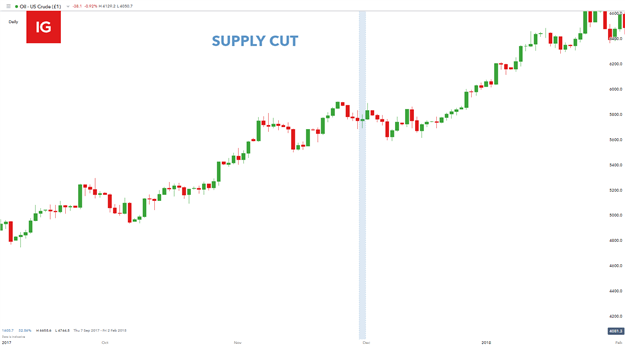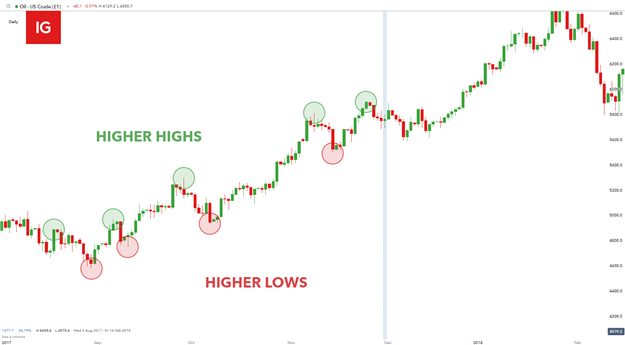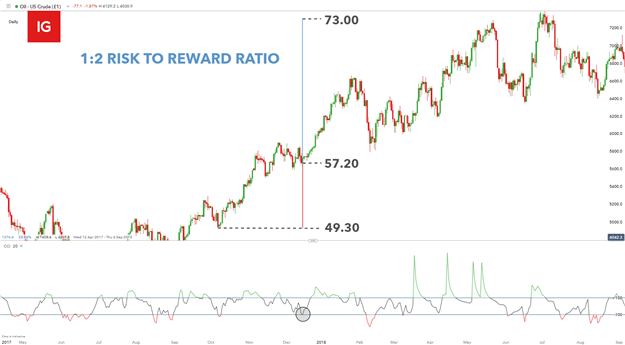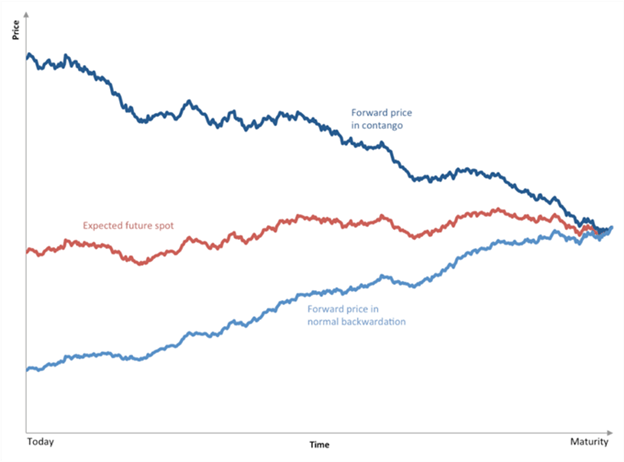Crude Oil Trading Strategies and Tips (Part 2)
Pipscollector.com - Crude oil is known as one of the most liquid commodities, with large trading volumes and transparent price charts. Here are some crude oil trading strategies that take careful risk calculations to achieve greater consistency and efficiency in your operations.
HOW TO TRADE OIL: TOP TIPS AND STRATEGIES
Expert oil traders generally follow a strategy. They will understand the fundamental factors that affect the price of oil and use a trading strategy that suits their trading style. Each trading strategy is different, risk management is an important component to consistent trading, like the effective use of leverage and avoiding top trading mistakes.
A comprehensive crude oil trading strategy could include:
- Fundamental Analysis
- Technical Analysis
- Risk Management
Once a trader understands the fundamental supply and demand factors that affect the price of oil, he/she can look for entries into the market using technical analysis. Then, when a buy or sell signal has been identified using technical analysis, the trader can implement the proper risk management techniques. Let’s go through an example using the steps outlined above:
1. Fundamental Analysis
On the 30th of November 2017, OPEC and Russia agreed to extend an oil production cut, which lead to a decrease in supply. The basic theory of supply and demand suggests that a decrease in supply should be succeeded by an increase in demand and consequently price. This is the fundamental analysis a trader would need to incorporate into their strategy in order to identify potential buy signals in the market.
WTI daily chart highlighting supply cut:

2. Technical Analysis
The next step would be to analyze the chart using technical analysis. There are a variety of technical indicators and price patterns a trader can use to look for signals to enter the market. There is no need to use many technical indicators, one that you understand well will do the job. A common yet very effective way to begin analyzing any chart is to identify the overall trend of the market. In this example, the implementation of simple price action is used to identify higher highs and higher lows which is suggestive of a preceding upward trend. This falls in line with our fundamental expectation of further upward price movement.
WTI daily chart showing preceding upward trend:

Once the bullish trend has been confirmed, the next step in the trading strategy would be to recognize possible entry points. Again, there are multiple tools and techniques to locate entry points but this example uses the Commodity Channel Index (CCI) indicator which moves into oversold territory shortly after the fundamental supply cut announcement was made. An oversold signal on the CCI advocates further price appreciation and the possibility of a long (buy) entry.
WTI daily chart with CCI indicator:

3. Risk Management
The final step in any trading strategy would be to employ sound risk management to every trade. At Pipscollector we support the 1:2 risk-reward ratio guideline which basically means that the target level should be roughly two times more than the position stop-loss level. To manage risk, the trader could look to set a take-profit above the recent high and set a stop-loss at the recent low.
In this example, a recent swing low ($49.30) has been identified as stop level which is approximately $8 away from the entry price ($57.20). There is no recent high which in this case which would allow for a target projection using basic math. With the stop distance being roughly $8 away from entry, a 1:2 projection could seee initial resistance at the $73 level.
WTI daily chart with 1:2 risk-reward ratio:

This sample trade would illustrate a positive risk to reward ratio. We researched millions of live trades in a variety of markets and discovered a positive risk to reward ratio was a key element to consistent trading. Additionally, at Pipscollector, we recommend risking less than 5% of capital on all open trades.
ADVANCED TIPS FOR OIL TRADING
Advanced traders can incorporate additional information when setting up trades. Traders sometimes look at the futures curve to forecast future demand, CFTC speculative positioning to understand the current market dynamic and can use options to take advantage of forecasted high volatility moves or to hedge current positions.
Futures Curve: The shape of the futures curve is important for commodity hedges and speculators. As such, when investors analyze the curve, they look for two things, whether the market is in contango or backwardation:
- Contango: This is a situation in which the futures price of a commodity is above the expected spot price, as investors are willing to pay more for a commodity at some point in the future than the actual expected price. This typically signals a bearish structure.
- Backwardation: This is a situation when the spot price is above the forward price for a commodity. This typically signals a bullish structure.

CFTC/Speculative Positioning:
The Commodity Future Trading Commission Report (CFTC) is important when trading crude oil futures. It provides traders with information related to market dynamics and therefore s can be a good way to gain a sense of where oil prices are heading. Movements in the CFTC managed money net positions typically precede the move in oil prices.
Trading via futures and options
Buying futures and options, a trader must use the appropriate exchange for the oil benchmark he/she wants to trade. Most exchanges have criteria for who is allowed trade on them, so the majority of futures speculation is undertaken by professionals.
Oil Investing
Instead of trading the individual market, a trader can get exposure to oil through shares of oil companies or through energy-based exchange traded funds (ETFs). The price of oil companies and ETFs are heavily influenced by the price of oil.
Major Oil/Energy ETFs:
- Energy Select Sector SPDR (XLE)
- Vanguard Energy ETF (VDE)
- United States Energy Fund (USO)
KEY REPORTS EVERY OIL TRADER SHOULD FOLLOW
Weekly updates on the amount of crude oil inventories in the U.S. are very important pieces of data for oil traders – the release of which frequently leads to a bout of volatility. The inventory data is an important barometer for oil demand. For example, if weekly inventories are increasing, this would suggest that demand for oil is dropping, while a drop in inventories suggests that oil demand is outstripping supply.
- American Petroleum Institute (API): The API produces a weekly statistical report, which highlights the most important petroleum products that account for more than 80% of total refinery production, while crude oil inventories are also included. This data is typically released on Tuesday at 16:30ET/21:30 London time.
- Department of Energy (DoE/EIA): Much like the API report, the DoE report provides information on the supply of oil and the level of inventories of crude oil and refined products. This is announced on Wednesday at 10:30ET/15:30 London time.
USING SOCIAL MEDIA TO TRADE CRUDE OIL
Over the years, social media has become an increasingly useful platform to share ideas, pass on information and receive breaking news. This is the case for oil traders using #OOTT, which stands for the “Organization of Oil Traders” on Twitter. Here traders and industry leaders provide breaking news and key reports related to the oil market.
Read more articles in the Educational Content category to update the latest forex knowledge from Pipscollector.
- Pipscollector -
